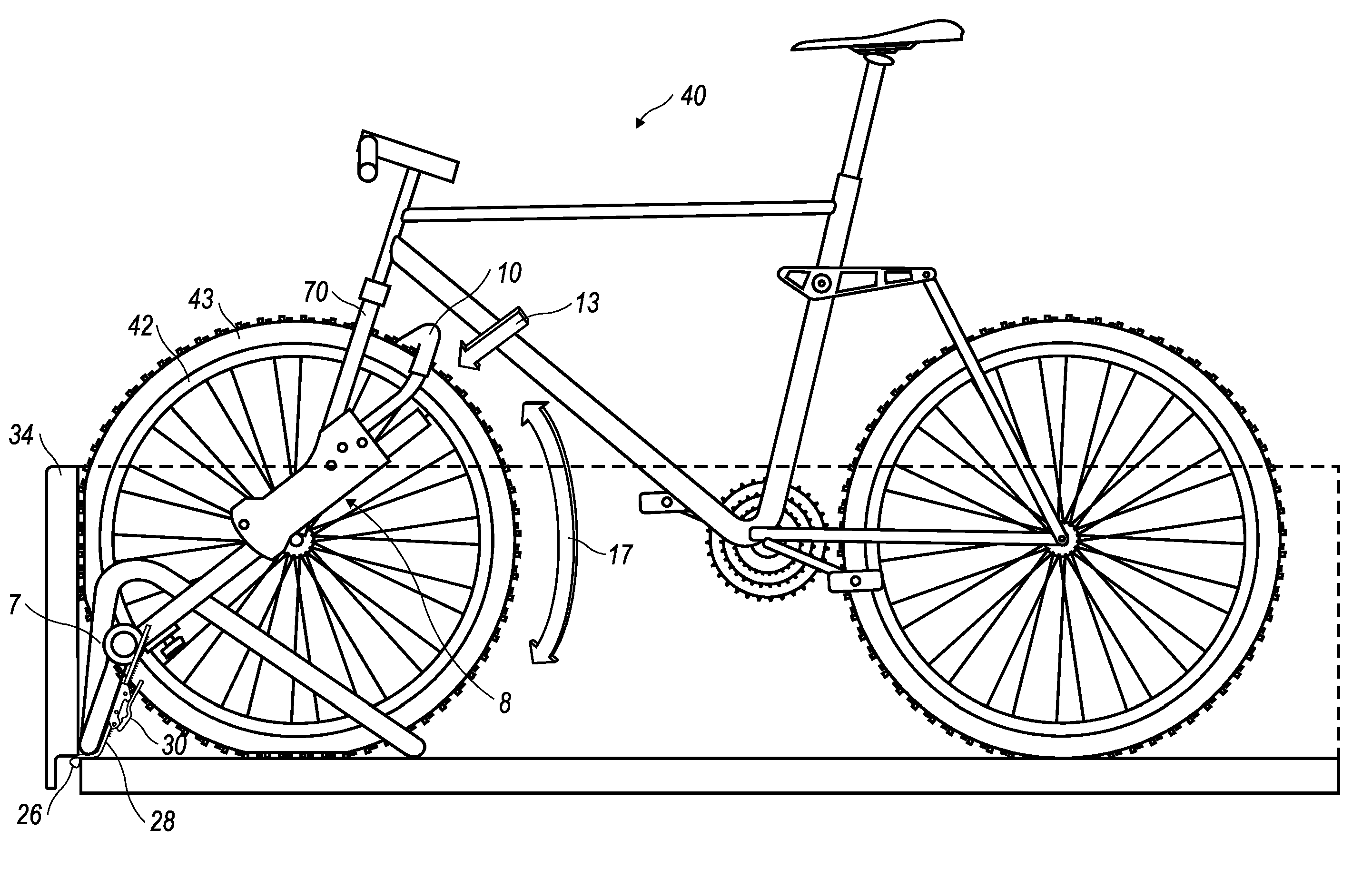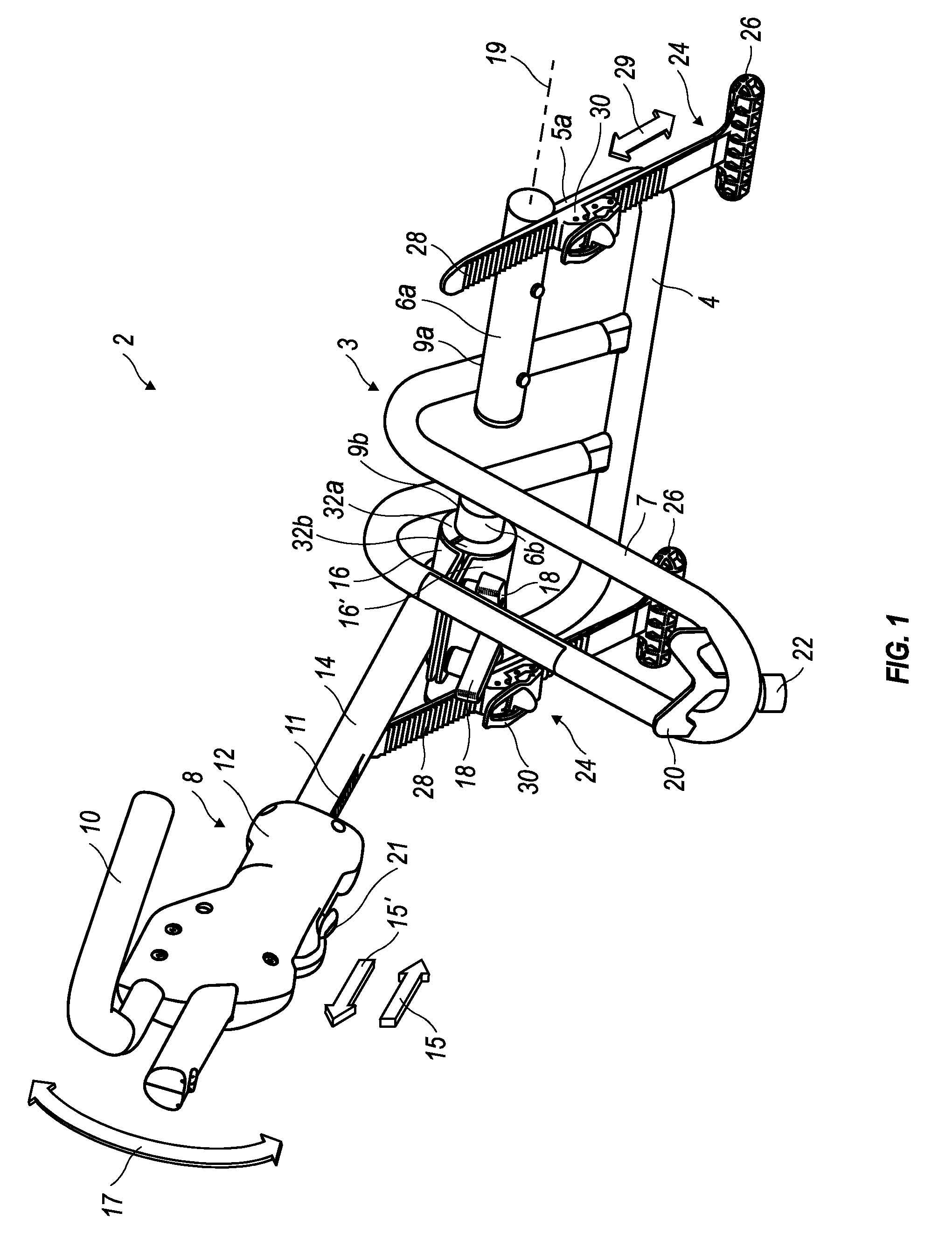Bicycle rack for a vehicle bed
a vehicle bed and bicycle rack technology, applied in vehicle components, supplementary fittings, transportation vehicles, etc., can solve the problems of bicycle damage, bicycle damage, transportation vehicle, or both, and not necessarily sufficiently secured on the bed, so as to facilitate the use of the rack, avoid damage to the bike, and facilitate installation.
- Summary
- Abstract
- Description
- Claims
- Application Information
AI Technical Summary
Benefits of technology
Problems solved by technology
Method used
Image
Examples
Embodiment Construction
[0041]The present invention will now be more described and disclosed in greater detail. It is to be understood, however, that the disclosed embodiments are merely exemplary of the invention and that the invention may be embodied in various and alternative forms. It should also be understood that the accompanying figures are not necessarily to scale and some features may be exaggerated, or minimized, to show details of particular components. Therefore, specific structural and functional details disclosed herein are not to be interpreted as limiting the scope of the claims, but are merely provided as an example to teach one having ordinary skill in the art to make and use the invention. It should also be appreciated that in the detailed description that follows, like reference numerals on different drawing views are intended to identify like structural elements. It should also be appreciated that while the present invention is primarily described as a rack assembly primarily configure...
PUM
 Login to View More
Login to View More Abstract
Description
Claims
Application Information
 Login to View More
Login to View More - R&D
- Intellectual Property
- Life Sciences
- Materials
- Tech Scout
- Unparalleled Data Quality
- Higher Quality Content
- 60% Fewer Hallucinations
Browse by: Latest US Patents, China's latest patents, Technical Efficacy Thesaurus, Application Domain, Technology Topic, Popular Technical Reports.
© 2025 PatSnap. All rights reserved.Legal|Privacy policy|Modern Slavery Act Transparency Statement|Sitemap|About US| Contact US: help@patsnap.com



